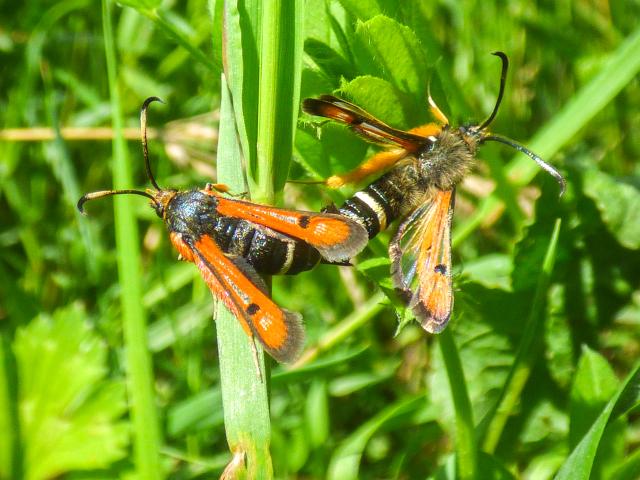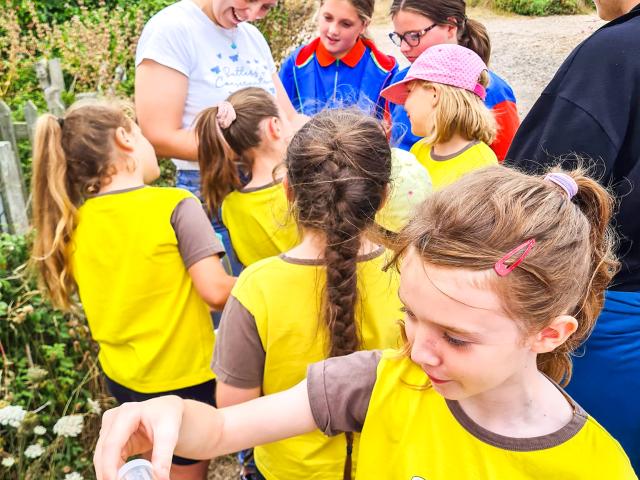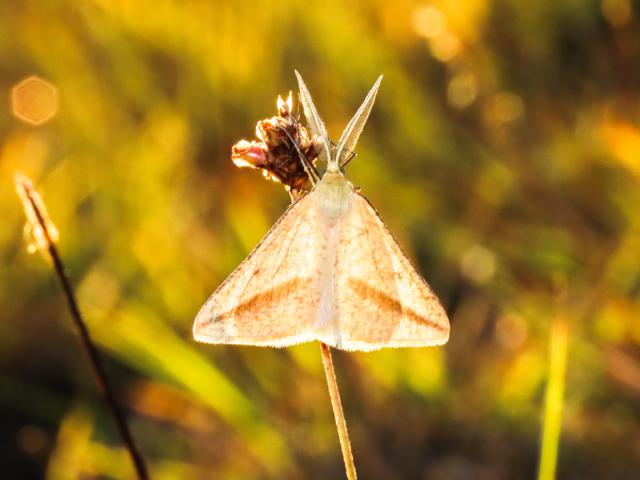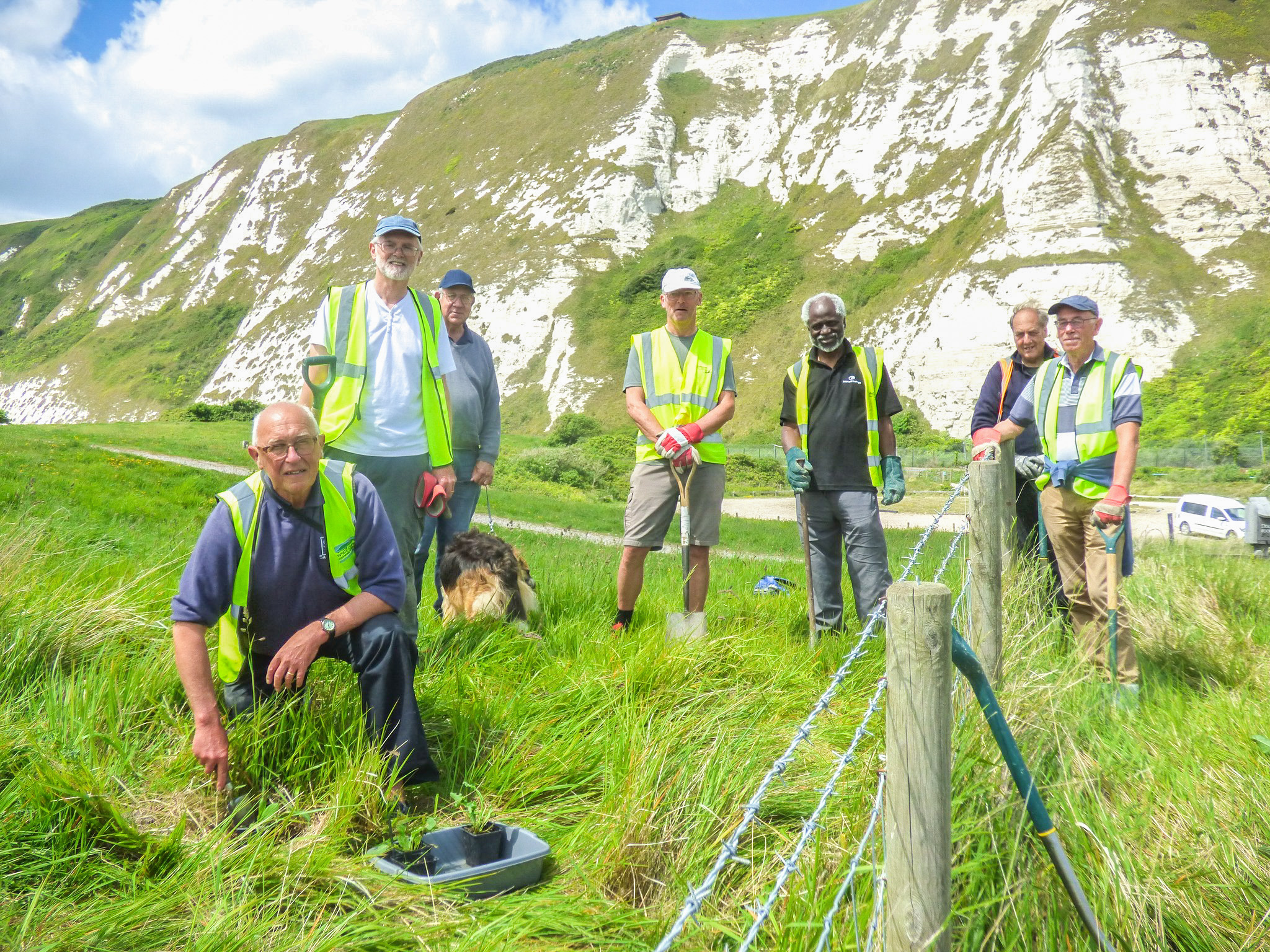Volunteers counted moths on White Cliffs of Dover, created new habitat and even found new moth populations.
A three-year citizen science experiment encouraging the people of Kent to love and care for local moths has been hailed a huge success.
Leading wildlife charity Butterfly Conservation launched Kent's Magnificent Moths in 2021, capitalising on the fact that East Kent is home to the greatest concentration of rare and threatened moth species in the UK, including the fluffy white Marsh Mallow, the elegant Sussex Emerald and the wasp-mimicking Fiery Clearwing.

Over 36 months, more than 26,000 people joined 345 events that included handling rare moths on the White Cliffs of Dover, sowing seeds for moth plants across the countryside and making moth biscuits.
The project, which is now the UK’s biggest-ever dedicated moth conservation scheme, even discovered a new breeding population of the rare and beautiful White-spotted Sable moth.
Ongoing work by local community groups and volunteers will continue to secure local populations of moths, butterflies and other wildlife for years to come.

Rebecca Levey, Kent’s Magnificent Moths Conservation Officer at Butterfly Conservation, said: "We've been blown away by how people in Kent have made this project a fantastic success. People sometimes think moths are dull or even scary, but that couldn't be further from the truth - we've shown the people of Kent that their county is home to gorgeous species like the Bright Wave, the Straw Belle and the amazing Fiery Clearwing.
"Not only have more than 26,000 people joined our events, thousands of those people have helped sow plants and create habitat for magnificent moths and raise awareness about them. That work will carry on long after this project finishes, inspiring yet more people to care for these wonderful insects. We would like to say a huge thank you to everyone who has been involved so far – you have made a genuine difference to local wildlife."

Over three years the Butterfly Conservation team organised:
- Three citizen science moth counts, engaging more than 19,000 people in person and online
- Thirty community group events with 330 participants taking part in moth trapping to learn about local species, decorating moth-shaped biscuits and sowing seeds of caterpillar food plants in their gardens and at local wildlife hotspots
- Thirty-seven sessions at local primary schools with 1,406 pupils and teachers handling live moths, creating moth murals and stickers, going on caterpillar safaris and planting moth-friendly nectar plants
- Twenty-three workshops training 270 volunteers
- Twelve Lights at Night moth trapping events with 222 nature lovers at castles, country houses, urban parks and even on the White Cliffs of Dover
- Sixteen Moth Mornings, opening moth traps from the night before, with more than 1,300 early-risers.

The project has also achieved significant conservation successes across the county:
- The discovery of a new breeding population of White-spotted Sable moth in Clowes Wood near Canterbury
- Volunteers spent 255 hours improving habitat for Bright Wave moths and found the species breeding in chalk grassland for the first time in the UK, increasing the known Kent population size by a whopping 850%
- Volunteers grew and planted in the wild 388 rare Hog's Fennel plants for Fisher's Estuarine moth and planted more than 1,000 Marshmallow plants to encourage Marsh Mallow moths
- More than 50 volunteers trained to identify the eggs of the Fiery Clearwing which has meant the number of known breeding sites has increased by 185%
- In 2023, volunteers recorded the highest number of Black-veined moths ever counted in Kent.
Julie Williams, Butterfly Conservation Chief Executive, said: "We are facing a nature and climate crisis and butterflies and moths, as well as being wonderful creatures in their own right, are fantastic indicators of the health of our environment so they are hugely valuable species to look after.
“The people of Kent have not only helped us count butterflies and moths to get a more detailed picture of how the whole ecosystem is doing, they've gone above and beyond by helping us to create and maintain habitat that will benefit a huge range of species and ensure that Kent remains the wildlife garden of England. Thank you to everyone who has joined us in this project over the past three years, and please keep up your fantastic work."

The project was made possible by the National Lottery Heritage fund and Butterfly Conservation worked with numerous partners including Canterbury City Council, Natural England, RSPB, Forestry England and the White Cliffs Countryside Partnership.
One of the groups that will help ensure the legacy of the project is Kent Moth Group which organises regular events. Find out more at kentmoths.org
If you would like to help butterflies, moths and other wildlife anywhere in the UK, get help and advice and share your story at wild-spaces.co.uk


